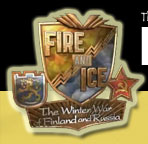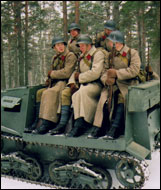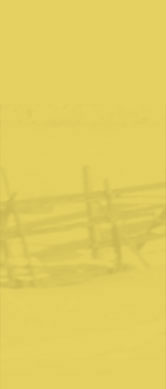

Mortar | Anti Tank | Artillery | Grenades
The Red Army commanders were firm believers in the use of mortars, and in a well supplied Soviet division there would be as many as 30 mortars issued. The main mortar types ranged from 82mm to the heavy 120mm versions. The most common Soviet mortar was the 82mm Model of 1938. These mortars were very similar to the Finnish 81mm and in most cases were of exceptional quality. The larger 120mm mortars were in most cases linked to artillery units as their firepower was devastating. The Finns were so impressed with the 120mm mortar that in 1940 they began production of their own domestic version. There seems to have also been some limited use of 50mm mortars by the Red Army during the Winter War but the facts are not clear. The Finns did capture a small number of 50mm mortars from the Soviets, but it is not known how many the Soviets made use of. It is thought their use was on a small scale and were brought into Finland after the first month of combat.
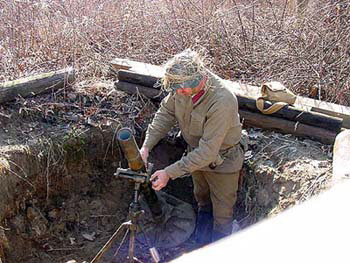
A member of the Soviet 37th Motorized re-enactors taking part in
a Finn-Soviet war event in Indiana. The mortar is a Model 1938 82mm.
Marshall Kregel
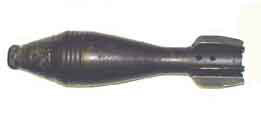
A 50mm Soviet mortar round.
Brent Snodgrass collection
The Soviet Union had a modern army which had learned the importance of field artillery, and the Red Army was fully equipped with a large selection of artillery pieces. These ranged from 76mm Light Field Cannons to the super heavy 203mm Howitzer. A well stocked Red Army division was outfitted with 38 field guns in 76mm, another 28 in 122mm, and 12 of the 152mm field guns. This was an overwhelming number when compared to a Finnish division that in most cases fielded less than 36 total guns in various calibers. Soviet artillery was not known for its accuracy but made up for this shortcoming by the massive amount of shells that could be fired. The Soviets' main goal with artillery was to overwhelm their enemy, and the Red Army artillery forces were well suited for this task.
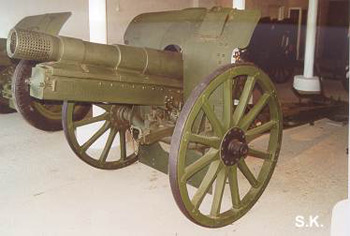
Soviet 122 mm howitzer model 1909/37
Sami H. E. Korhonen
of Winter War Dot Com
One of the more interesting pieces of Soviet artillery was the 76
RekK 35 which is a 76mm recoilless cannon. There were few of these
made and there is little information known about these cannons. The
name of the cannon translates to 76 mm battalion dynamo-reactive
cannon by Kurchevskiy and it was invented in 1930 or 1932.
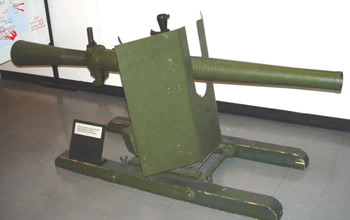 76 RekK 35
76 RekK 35
Brent Snodgrass taken at the Military Museum Helsinki Finland
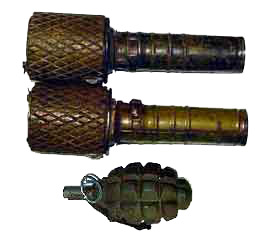
Top: RGD-33 stick
Bottom: F1 egg or pineapple
Brent Snodgrass
The two main grenades in the Red Army were the RGD-33 stick and
the F1 egg or pineapple. The RGD had a fragmentation sleeve that
was added to create more casualties and featured a 3 - 4 second
fuse. The F1 grenade was modeled on an earlier French design and
also had a 3 to 4 second fuse. In most cases three grenades were
issued and carried in a pocketed pouch.

